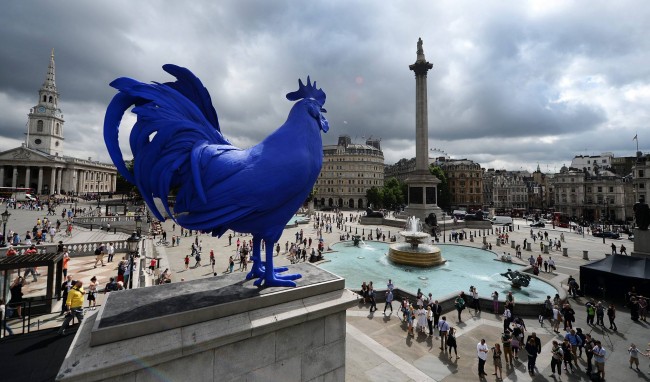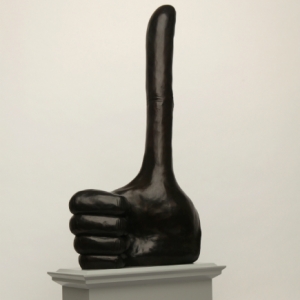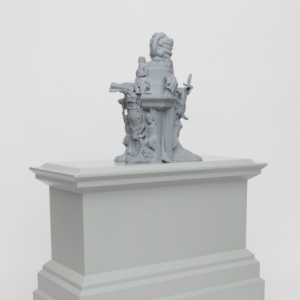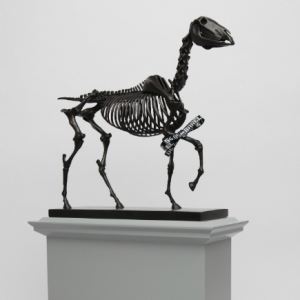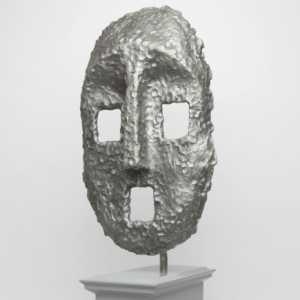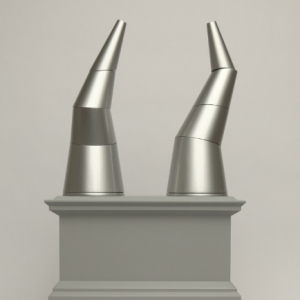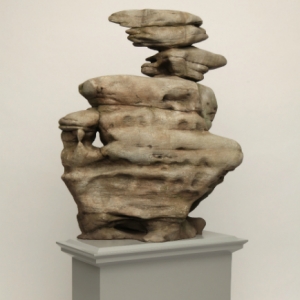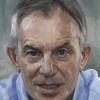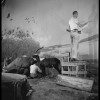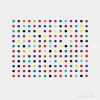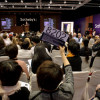The Fourth Plinth Commission might seem like more of a poisoned chalice than a career-changing opportunity. The degree of scrutiny that comes with this most public of prizes lavishes the successful artist with instant celebrity, but also shackles them with the perennial complaints of “what’s it for?” and “not with my taxpayer’s money”. Not one to buck the trend, here is your guide to the next lambs for the slaughter.
Trafalgar square is not an ideal venue for contemporary public art. This neoclassical edifice piles grey on top of more grey, which is why I was slightly disappointed to discover that ALL of the six contenders come in varying shades of…you guessed it…grey. At least the current occupant, Hahn/Cock by Katharina Fritsch, will provide some welcome Yves Klein Blue over the coming months.
The second trap, which several of the shortlisted artists have fallen for, is repetition. Trafalgar Square, in all its faded Victorian glory, is no doubt ripe for satire. However, previous incumbents, Rachel Whiteread, Marc Quinn, Yinka Shonibare, Michael Elmgreen and Ingar Dragset have all subverted the venue with varying degrees of success. What can we possibly gain from making the same point again? Well, apparently David Shringley, Mark Leckey and Hans Haacke want to give it a try.
Shringley’s Really Good, a giant hand with extended thumb that mimics Nelson’s Column, is a monument to kitsch and a half-joke that won’t hold up to repeated viewings. His comments that the ten-meter bronze statue will prove a “cost effective way” of making “London, the UK and the world a better place” are sadly wrong on all counts. Likewise, Leckey’s Larger Squat Afar provides more of the same post-modern irony, but with at least a smidge of ramshackled charm.
Haacke’s Gift Horse, on the other hand, has a kind of macabre Ray Harryhausen-like appeal. Unfortunately, Elmgreen and Dragset’s Powerless Structures (2012), has already adequately explored the lunacy of war and the childlike machismo of the classical equestrian statue.
Added to the front leg of Haacke’s beast will be a live London Stock Exchange ticker. Although this provides an extra dimension to the installation, the overall effect leaves the 77-year-old artist’s vision looking decidedly adolescent.
Aside from Ugo Rondinone’s Moon Mask, which lacks visual impact, the best of the rest are Marcus Coates’ Unmade Monument and Liliane Lijn’s The Dance. Lijn’s kinetic sculpture is comprised of two gyrating cones, locked in a perpetual Tango. Her “living statues” are sure to give the ubiquitous and second-rate street performers dressed as Captain Jack Sparrow or Shrek a run for their money. Her work has a utilitarian elegance that could breathe new life into this tired stage.
Finally, Coates delivers a homage to The Eagle, an actual rock formation found at Brimham Rocks, Yorkshire. Unmade Monument calls to mind humankind’s long and mysterious relationship with rocks, as both a material for manipulation and as objects of worship. This primitive urge endures; just take a trip to Stonehenge, or even a wander down London’s Cannon Street where the enigmatic London Stone resides. Coates’ Henry Moore-like monolith takes a bow to the natural forms that have always influenced sculptors. The prospect of un-hewn rocks emerging from the artificially geometric stone plinth will provide a striking juxtaposition and a reminder that the rocks we sculpt may already be millions of years old. Art may provide the illusion of eternity, but Unmade Monument is a momento mori to human endeavour.
